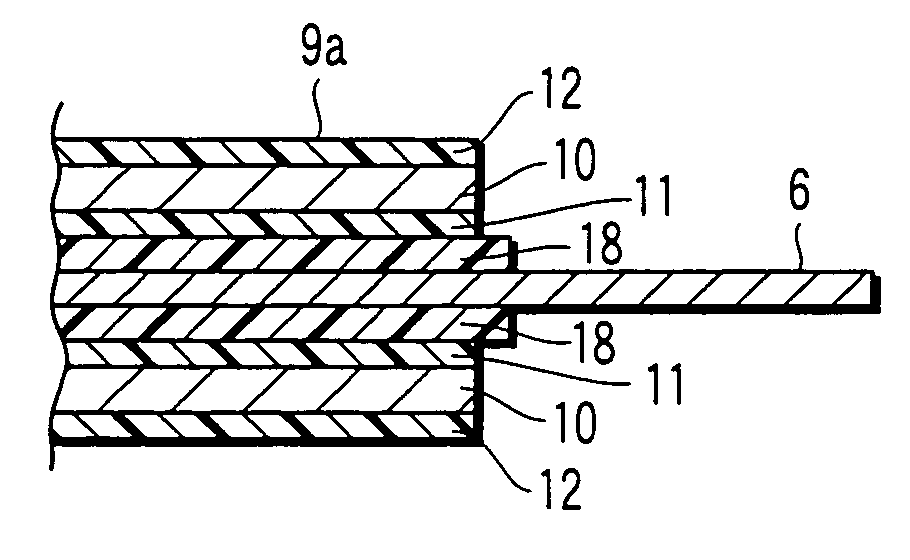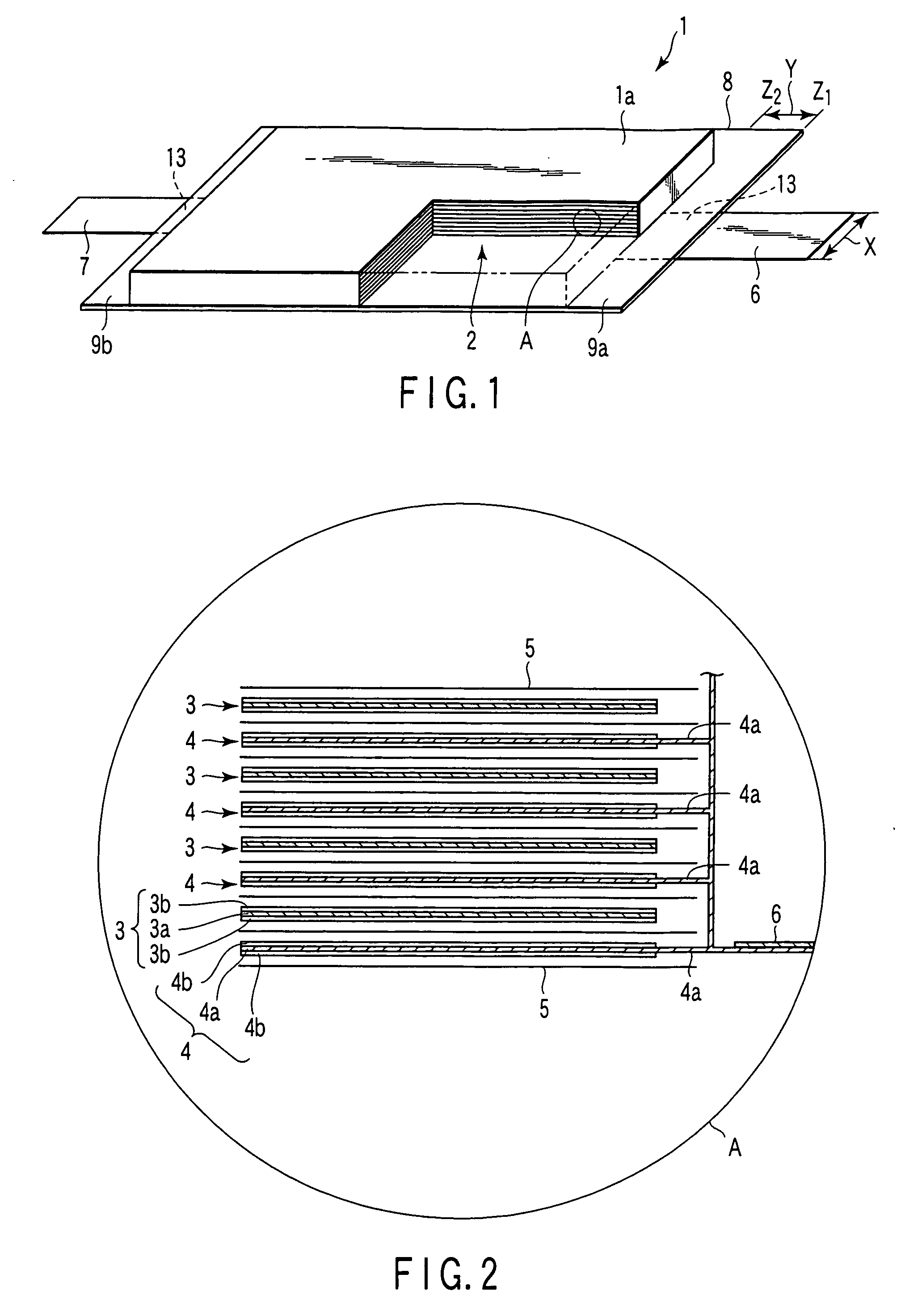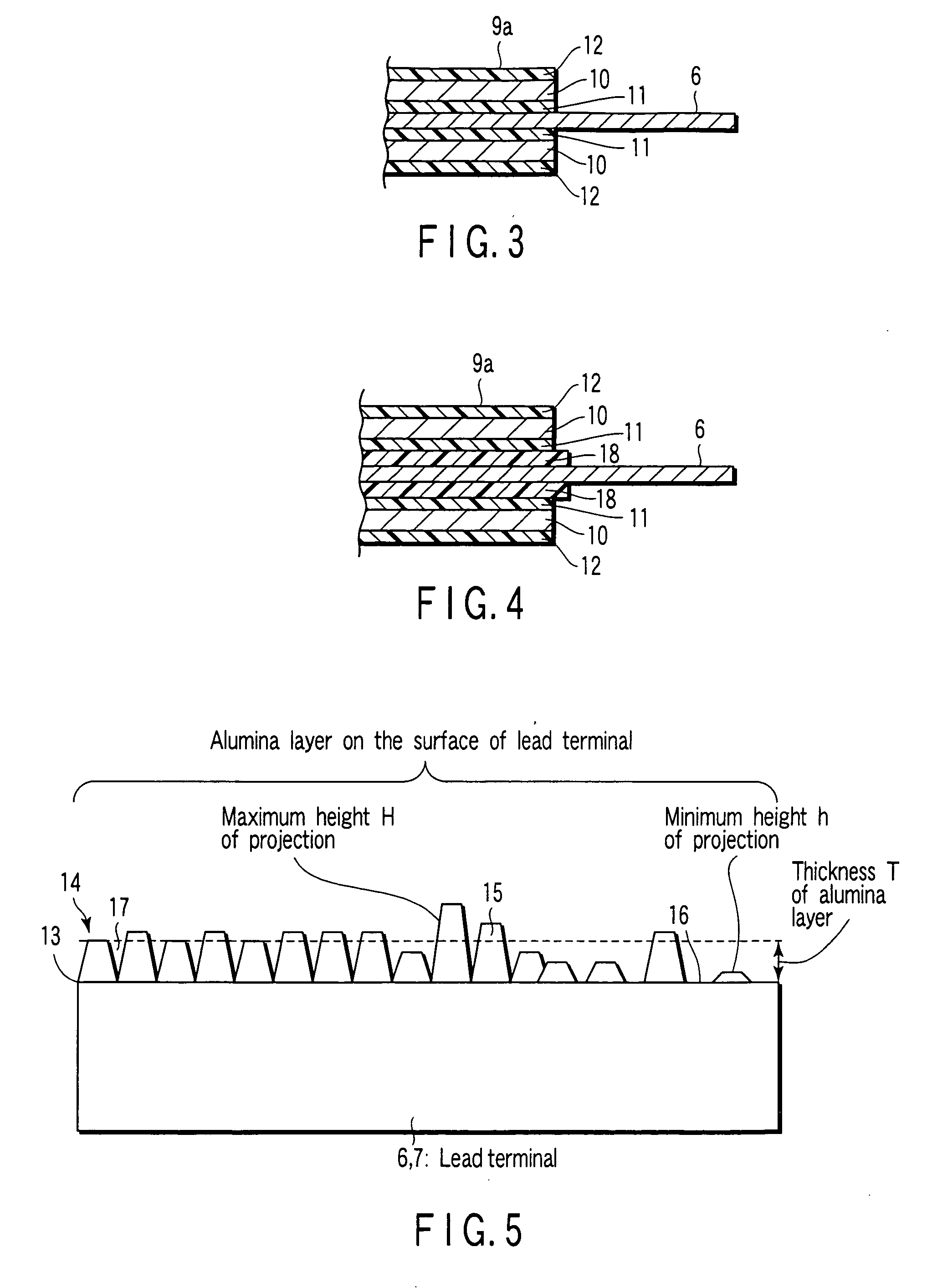Nonaqueous electrolyte battery, battery pack and vehicle
a technology of nonaqueous electrolyte and battery pack, which is applied in the direction of batteries, sustainable manufacturing/processing, cell components, etc., can solve the problems of reducing capacity, reducing discharge capacity, and disadvantageous in view of the energy density of mounting protective circuits, etc., and achieve excellent charge-discharge cycle characteristics
- Summary
- Abstract
- Description
- Claims
- Application Information
AI Technical Summary
Benefits of technology
Problems solved by technology
Method used
Image
Examples
first embodiment
[0058] An example of the nonaqueous electrolyte battery according to the first embodiment of the present invention will now be described with reference to FIGS. 1 to 5. FIG. 1 is an oblique view, partly broken away, schematically showing the construction of a flat type nonaqueous electrolyte secondary battery according to the first embodiment of the present invention. FIG. 2 is a cross sectional view showing in a magnified fashion the construction of the circular region A shown in FIG. 1. FIG. 3 is a cross sectional view exemplifying in a magnified fashion an example of the construction of the heat sealed section shown in FIG. 1. FIG. 4 is a cross sectional view exemplifying in a magnified fashion another example of the construction of the heat sealed section shown in FIG. 1. Further, FIG. 5 is a cross sectional view showing in a magnified fashion the construction of the first seal portion of each of the positive electrode terminal and the negative electrode terminal shown in FIG. 1...
second embodiment
[0132] A battery pack according to a second embodiment of the present invention comprises a plurality of unit cells each formed of the nonaqueous electrolyte battery according to the first embodiment of the present invention. The unit cells are electrically connected in series or in parallel to form a battery module.
[0133] The unit cell according to the first embodiment of the present invention is adapted for forming the battery module, and the battery pack according to the second embodiment of the present invention is excellent in the charge-discharge cycle characteristics, as described in the following.
[0134] The unit cell according to the first embodiment of the present invention permits maintaining a high air-tightness over a long time to make it possible to diminish the difference in the capacity and the difference in impedance among the individual batteries. As a result, when the battery module comprising a plurality of unit cells that are connected in series is charged full...
example 1
[0151] The negative electrode was prepared as follows. In the first step, prepared was a mixture consisting of 90 parts by weight of lithium titanate (Li4Ti5O12) powder having a spinel structure, an average particle diameter of 0.5 μm, 20 m2 / g of a specific surface area as determined by the BET method using a N2 gas, and exhibiting a lithium ion insertion potential of 1.55V (vs. Li / Li+), 7 parts by weight of carbon powder used as a conductive agent and having an average particle diameter of 4 μm, and 3 parts by weight of polyvinylidene fluoride (PVdF) used as a binder. The mixture was dispersed in n-methyl pyrrolidone (NMP) to obtain a slurry. Then, an aluminum foil (99% of purity) having a thickness of 10 μm and an average crystal grain diameter of 50 μm was coated with the slurry thus obtained, followed by drying the aluminum foil coated with the slurry and subsequently applying a hot press to the dried aluminum foil to manufacture a negative electrode having an electrode density ...
PUM
| Property | Measurement | Unit |
|---|---|---|
| particle diameter | aaaaa | aaaaa |
| average crystal grain size | aaaaa | aaaaa |
| humidity | aaaaa | aaaaa |
Abstract
Description
Claims
Application Information
 Login to View More
Login to View More - R&D
- Intellectual Property
- Life Sciences
- Materials
- Tech Scout
- Unparalleled Data Quality
- Higher Quality Content
- 60% Fewer Hallucinations
Browse by: Latest US Patents, China's latest patents, Technical Efficacy Thesaurus, Application Domain, Technology Topic, Popular Technical Reports.
© 2025 PatSnap. All rights reserved.Legal|Privacy policy|Modern Slavery Act Transparency Statement|Sitemap|About US| Contact US: help@patsnap.com



